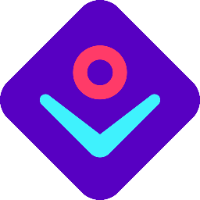We at atingi want our digital learning offers to be accessible and inclusive for all learners. Language is a big part of this, which is why we have developed the following guidelines about "Easy Read". In general, (written) language can be seen as different approaches on a spectrum of accessibility. Many of our learners speak English only as a foreign language, which is why all texts should be as simple and clear as possible.
Definition and characteristics of Easy Read
‘Easy read’ refers to the presentation of text in an accessible, easy to understand format. The right to accessible information is established in law with the United Nations Convention on the Rights of Persons with Disabilities (UNCRPD). Furthermore, many countries have established laws and policies that promote equality through accessibility.
Easy Read makes written information easier to understand for:
- people with learning disabilities;
- people who speak English as a second language;
- people who find it hard to read and write;
- people who have memory problems;
- people who are in a hurry or are stressed.
There are no legal standards for Easy Read (yet). But most experts and users agree on the same key considerations:
- Sentences in Easy Read have no more than ten to fifteen words.
- Each sentence has just one idea and one verb.
- Active sentences are used instead of passive sentences.
- Ideas are expressed in a small number of simple words.
- Any difficult word or idea is explained in a separate sentence.
Information that is easy to read and understand is beneficial for:
- People consuming information (audiences and consumers). They will feel more confident and trust in the product or service if the information is easy to use.
- Companies, organisations or individuals providing information. Clear information will help meet user needs and reduce frustration. Delivering a seamless experience will increase the uptake of a product or service.
Preparing documents
It is important to structure your information and document(s). Try to answer the following questions before you start writing:
- Who is your audience?
- How will they use the document?
- What are their needs?
- Is the document actually important? Try to prioritise documents if you have a lot.
- What are the most important facts/core information?
- Is any knowledge assumed that would need explaining?
Preparing texts
Content and style
- Does the text focus on the key information?
- Are the sentences shorter than 10 to 15 words?
- Does the text use simple words?
- Are more complex words or abbreviations avoided or explained?
- Are active sentences used?
- Does the text contain fitting images that support the key messages?
Layout
- Is the number of pages appropriate? Try to keep the document as brief as possible
- Are dot points used to structure information?
- Does the text have clear sections and headings?
- Is the text size large enough?
- Is there enough white space?
Checklist for accessible language
It is recommended to check your texts for accessibility, especially if they are learner facing. You can just use the following list and do a self-check of your content.
Sources
What is Easy Read? | AbilityNet
Home | Easy Read Online (easy-read-online.co.uk)
Easy-to-read - Inclusion Europe (inclusion-europe.eu)
Easy read | Online Accessibility Toolkit
https://www.plainlanguage.gov/about/definitions/
